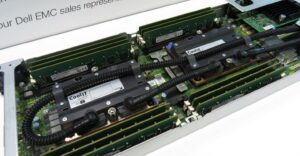Dell Technologies OEM Solutions was delighted to participate in the recent Dell Technologies Telecom Transformation event. It seems timely to reflect on how our organization contributes to the overall transformation of the telecom network through our Network Equipment Provider (NEP) partner-designed solutions program.
The intersection of 5G and edge
Why is transformation of the network so important now? The answer lies at the intersection of 5G and edge. By 2025, Gartner predicts that 75 percent of all global data will be produced, analyzed, and acted upon at the edge.
Meanwhile, 5G connectivity is essential to enabling the bandwidth, latency and device density edge environments and services will demand, especially at the enterprise edge. Communications service providers (CSPs) are ideally positioned to capitalize on this once-in-decade opportunity, but to exploit this opportunity, they need to transform.
In short, the telecom industry needs to completely redesign its end-to-end network architecture. The current equipment model simply cannot scale up to service 100 times the number of users plus 100 times the volume of data – nor is it ready to rapidly enable innovative new 5G services. Both NEPs and CSPs must automate, deliver speed, scale, and innovate, while driving down costs and increasing agility.
Reliable and scalable infrastructure
They both need built-in intelligence coupled with a reliable and yet simple infrastructure that can scale to meet demand. Think software-defined, flexible, open cloud-native, and virtualized solutions. As a result, the market is increasingly moving away from proprietary, expensive stacks and solutions into open standards and commercial off-the-shelf technology.
Other must-haves include carrier-grade platforms, industry-certified solutions, best-of-breed server switching and storage solutions, all fully optimized and designed to deliver a richer, more intuitive user experience.
How we can help
This is where Dell Technologies OEM Solutions adds value. Our dedicated Telecoms team has deep industry expertise, having successfully addressed the telecom market for many years. We have strong partnerships in place with leading NEPs, supporting them to bring their industry ready NEBS-compliant solutions to market.
Underlying technology
Today, our infrastructure and services are the underlying technology supporting both Network Function Virtualization platform (NFVI) and Virtual Network Functions (VNF) solutions, such as 5G core, vIMS, OSS, BSS, and private network for voice and IoT. The portfolio is now expanding to include virtual radio solutions.
A multi-faceted partnership
Our partnership with NEPs is multi-faceted, spanning everything from roadmap reviews, planning, architecting, customization, and solution design through to the verification of workloads, lifecycle management, and supply chain. For example, our edge server product line was designed by OEM Solutions in direct response to requests from NEP and service provider customers.Our OEM Solution teams engage with the R&D departments of NEPs providing expertise and infrastructure technologies, where experts from both companies assess the proposed solution before conducting proof of concept, testing and certification. This means that CSPs can absolutely rely on our Tier-1 infrastructure solutions and services as a foundational layer, while maintaining their important relationships with NEPs.
Go-to-market option: classic OEM
How do we jointly go to market with these solutions? We offer two options. One approach is the classic OEM model, where the NEP delivers an integrated, pre-certified, ready-to-deploy solution directly to the CSP. In this scenario, the CSP is usually already working with Dell Technologies as well as having a parallel relationship with one or more NEPs.
To clarify, our NEP partner-designed solution program does not affect any of the existing supply chain or support relationships. We simply ensure that the NEP has access to the right products on time to deliver verified and integrated solutions.
Go-to-market option: sell-with model
An alternative approach is what we call the disaggregated or sell-with model, where OEM Solutions partners with the NEP to design and verify the solution. In this scenario, the NEP and Dell work together to supply the software, services, and infrastructure. The pre-defined, certified infrastructure is directly sold through the Dell Technologies Telecom Sales organization, who work closely with the OEM Solutions Telecom team. In terms of solution deployment, the CSP works directly with the NEP.
Both models have unique advantages and we’re happy to support whichever model suits your needs. Learn more about our telecom strategy and NEP partnership program by registering here to watch our keynote address and on-demand breakout sessions. OEMs will be particularly interested in, “Transforming the network with OEM NEP Partner Designed Solutions.”
Accelerating innovation
I am excited about the road ahead. I believe that this kind of open, modern ecosystem will accelerate innovation and revenue growth for industries the world over. You have only to think of the edge as the perfect ecosystem for new applications, some of which are already enabling more immersive, real-time experiences like visual recognition and augmented or virtual reality.
Based on Intel technology, our pre-integrated, pre-tested and pre-certified NEP partner-designed solutions will reduce complexity, ensure quality, lower risk, shorten time to market, and reduce total cost of ownership.
Source: delltechnologies.com






























